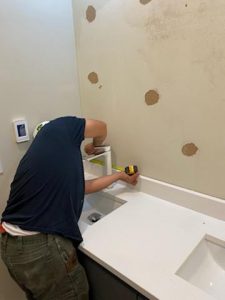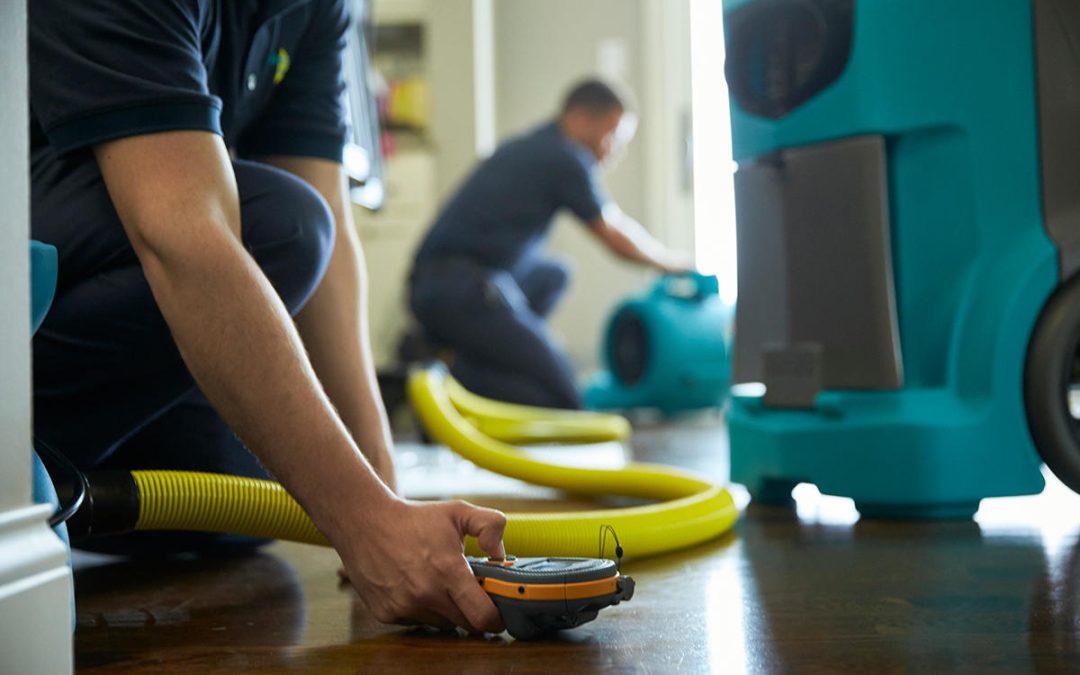Cleaning and Restoring Water Damaged Basement
Basements are vulnerable spaces in homes, susceptible to water damage due to their underground location and exposure to various sources of moisture. When water infiltrates your basement, it can lead to structural issues, mold growth, and compromised indoor air quality. Understanding the causes of basement water damage and implementing proper cleaning and restoration techniques are essential for mitigating damage and restoring your basement to a safe and functional condition. In this comprehensive guide, we will delve deeper into the causes of basement water damage and explore advanced cleaning and restoration techniques to help you address and prevent water damage effectively.
Understanding the Causes of Basement Water Damage
In order to effectively address and prevent future problems, homeowners must be aware of the causes of basement water damage. Inadequate external drainage, resulting from incorrectly graded areas surrounding the foundation, may cause water to collect close to the basement walls and eventually leak inside. Water can also seep through foundation cracks, which are frequently caused by soil movement or structural stress. Water damage to basements can be caused by malfunctioning gutters and downspouts, which cause water to flow toward the foundation rather than away from it. Other frequent offenders include sump pump failure, hydrostatic pressure from saturated soil, and surface water intrusion from snowmelt or heavy rains. Homeowners can prevent future problems with their basements and reduce the risk of water damage by recognizing these causes in advance.
Poor Exterior Drainage
Improper grading around the foundation of your home can lead to water pooling near the basement walls, increasing the risk of water infiltration and leaks.
Foundation Cracks
Over time, the foundation of your home may develop cracks due to soil movement, settling, or structural stress. These cracks provide pathways for water to seep into the basement, leading to water damage and potential structural issues.
Faulty Gutters and Downspouts
Clogged or damaged gutters and downspouts can result in water overflow, directing water towards the foundation of your home instead of away from it. This can contribute to basement flooding and water intrusion.
Sump Pump Failure
Sump pumps are designed to remove excess water from the basement, especially during heavy rainfall or flooding events. A malfunctioning or inadequate sump pump can lead to basement flooding and extensive water damage.
Hydrostatic Pressure
Hydrostatic pressure occurs when water accumulates in the soil surrounding the foundation of your home, exerting pressure against the basement walls. Over time, this pressure can cause water to infiltrate the basement through cracks or porous concrete.
Surface Water Intrusion
Heavy rainfall, melting snow, or poor landscaping practices can result in surface water pooling around the exterior of your home. If not properly managed, this water can seep into the basement, causing water damage and mold growth.

Dealing with Basement Water Damage: Cleaning and Restoration Techniques
Effective Cleaning and Restoration Techniques
Effective cleaning and restoration techniques are crucial for addressing basement water damage and restoring your home’s integrity. When water infiltrates your basement, it can cause structural issues, mold growth, and compromised indoor air quality. Implementing thorough techniques is essential to mitigate damage, remove contaminants, and prevent further deterioration. From water extraction and drying to mold remediation and structural repairs, employing these methods ensures a safe and habitable environment. By understanding and implementing these techniques, homeowners can minimize water damage and maintain a healthy living space.
- Assessment and Safety Precautions: Before beginning the cleanup process, assess the extent of the water damage in your basement. Ensure safety by turning off electrical power to the basement and wearing appropriate protective gear, including gloves, goggles, and respirators.
- Water Extraction: Use pumps, wet/dry vacuums, and mops to remove standing water from the basement. Focus on thorough extraction to prevent further damage and minimize the risk of mold growth.
- Drying and Dehumidification: Employ high-powered fans, dehumidifiers, and ventilation systems to dry out the basement effectively. Proper drying techniques are essential for preventing mold growth and restoring the indoor environment to a healthy state.
- Content Removal and Restoration: Remove water-damaged items from the basement, including furniture, carpets, and personal belongings. Salvageable items should be cleaned, dried, and restored using appropriate techniques and treatments.
- Cleaning and Disinfection: Thoroughly clean and disinfect all surfaces affected by water damage, including walls, floors, and baseboards. Use antimicrobial solutions to eliminate mold spores, bacteria, and other contaminants.
- Mold Remediation: If mold is present in the basement, take immediate action to address it. Use HEPA vacuums, antimicrobial cleaners, and specialized equipment to remove mold growth and prevent recurrence.
- Structural Repairs: Repair foundation cracks, seal gaps, and reinforce structural elements to prevent future water intrusion and maintain the integrity of your basement.
- Waterproofing Measures: Implement waterproofing strategies to protect your basement from future water damage. This may include applying sealants, installing drainage systems, and improving exterior grading.
- Sump Pump Maintenance: Regularly inspect and maintain your sump pump to ensure proper functioning and reliability during periods of heavy rainfall or flooding.
- Professional Restoration Services: Consider hiring a professional water damage restoration company to assist with the cleanup and restoration process. Experienced professionals have the expertise, equipment, and resources to handle complex water damage situations and ensure thorough restoration of your basement.
Preventing basement water damage is paramount for homeowners seeking to safeguard their property’s integrity. By implementing proactive measures, such as regular maintenance, proper landscaping, and gutter upkeep, homeowners can mitigate the risk of water infiltration and structural issues. These preventative steps help ensure a dry and secure basement environment, preserving the home’s value and occupants’ well-being.
- Regular Maintenance: Conduct routine inspections of your basement, foundation, gutters, and downspouts to identify potential issues and address them promptly.
- Proper Landscaping: Maintain proper grading around your home to ensure that water drains away from the foundation. Consider installing French drains or landscaping features to divert surface water away from your home.
- Gutter Maintenance: Clean and inspect gutters and downspouts regularly to prevent clogs and ensure proper water drainage.
- Foundation Sealing: Seal foundation cracks and gaps to prevent water infiltration and reinforce the structural integrity of your basement.
- Interior Waterproofing: Apply waterproofing coatings to basement walls and floors to create a moisture-resistant barrier and protect against water damage.
Dealing with basement water damage requires diligence, expertise, and a proactive approach to prevent further damage and restore your basement to a safe and habitable condition. By understanding the causes of basement water damage and implementing effective cleaning and restoration techniques, you can mitigate the impact of water intrusion and safeguard your home against future damage. Remember to prioritize safety, address structural issues, and consider seeking professional assistance for comprehensive basement water damage restoration. With proactive measures and regular maintenance, you can protect your basement from water damage and ensure the long-term integrity of your home.

